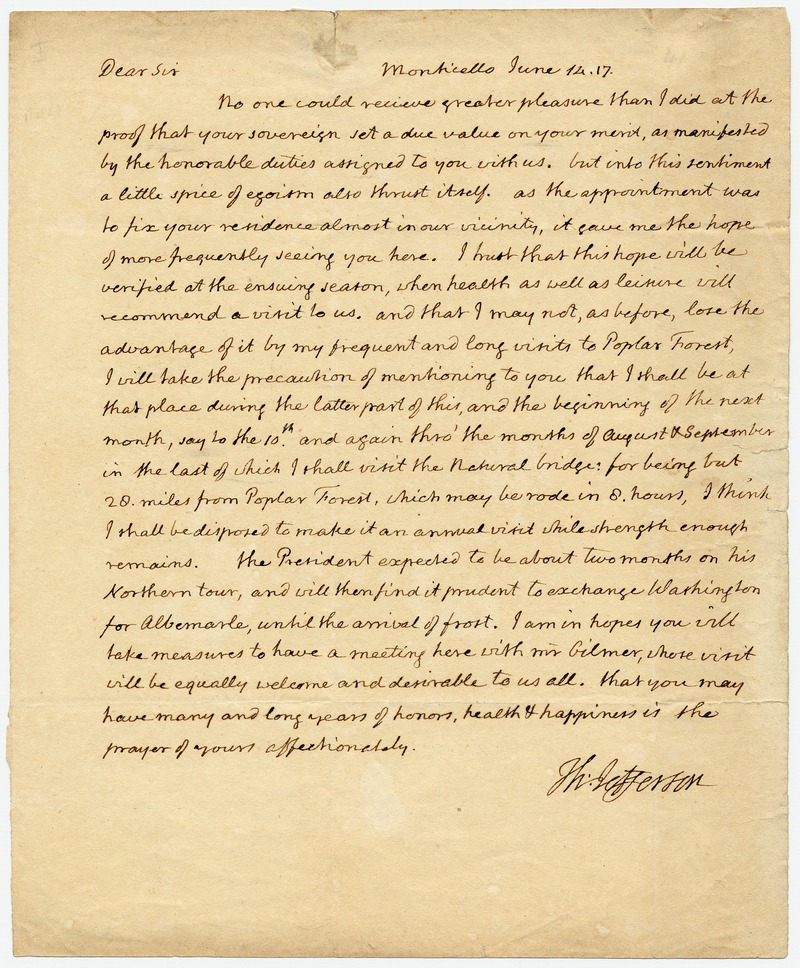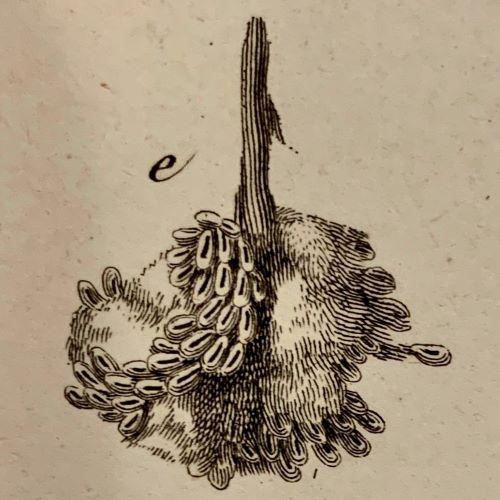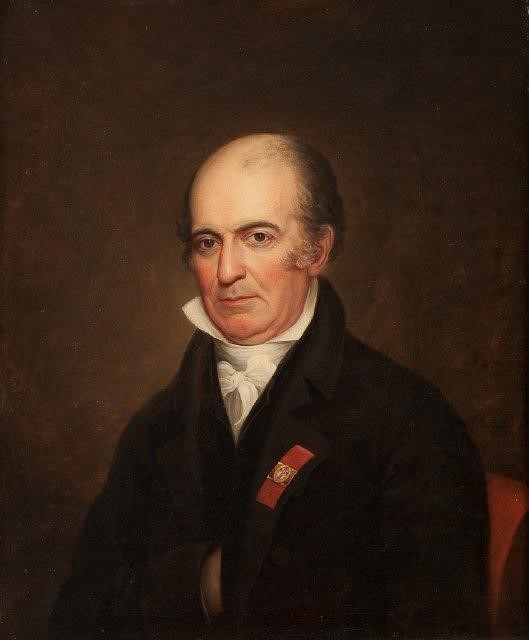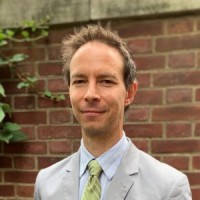Jefferson’s Catholic Priest
In June of 1813, Thomas Jefferson, then President of the American Philosophical Society, wrote to APS Vice-President Caspar Wistar:
“I found him what you had described in every respect; certainly the greatest collection, and best digest of science in books, men, and things that I have ever met with; and with these the most amiable and engaging character.”
Jefferson was writing about the Portuguese naturalist and botanist José Francisco Corrêa da Serra, who bore letters of introduction from the Marquis de Lafayette and Alexander von Humboldt, and was elected to the Royal Society in 1795, the Linnean Society in 1796, and the APS in 1812.
That Jefferson, oft smitten with cosmopolitan men of learning, found himself taken with Corrêa da Serra is of little surprise. That Corrêa’s Italian education included ordination as a Roman Catholic priest, and that he was considered to be one of Jefferson’s best friends, is.
![Rittera pinnata, Plate 7, José Francisco Correia da Serra, Vues carpologiques, [Paris : Museum d'histoire naturelle, 1807], American Philosophical Society Library & Museum, Pamphlets on botany, 580 Pam. v.5, no.3.](/sites/default/files/inline-images/Priest%20Blog_002.jpg)
The Abbé Corrêa (as most early Americans styled him) paid several extended visits to Monticello. In fact, of the home’s two front guestrooms, one was known as the Madison Room, the other, the Abbé Corrêa’s. Jefferson fawned over him, unable to get his fill during the Abbé’s “pilgrimages'' to Monticello. On New Year’s Day 1816, Jefferson begged:
“Stay then with us. become our instructor...help us on in the paths of that science which is wanting to our ripening character. you know how much you are beloved and desired every where, welcome every where, but no where so cordially as at Monticello. come and make it your home then, the place of rest & tranquility,”
Though he declined Jefferson's offer, Corrêa was the only non-family ever invited to live there permanently.

When Portugal’s royal government named Corrêa its ambassador to the United States that spring, Jefferson was thrilled by the notion the Abbé might well stay in Washington indefinitely. But Corrêa’s diplomatic career was far less successful than his scientific one, and the appointment ended in 1820.
His scientific contributions are noteworthy indeed. He was among the earliest students of the Linnaean system of taxonomy, and, as a student, even sent Linneaus some of his own observations. He was personal friends with APS Member Sir James Edward Smith, who popularized the Linnaean system in schools, and with Antoine Laurent de Jussieu, who developed the modern “natural” classification system used to this day. Corrêa rose to prominence by publishing widely in the Philosophical Transactions of the Royal Society and the Transactions of the Linnean Society on topics ranging from algae to symmetry. One of Corrêa’s American contributions was applying the Jussieu system to Muhlenberg’s American Catalog. He was no mere theorist-- his botanical treks carried him from the Canadian border to Georgia and Kentucky.

Corrêa’s story points to the sometimes overlooked relationship between science and early American history. Science and religion were less antithetical than one might believe, and Roman Catholic priests who doubled as scientists were rather common. For example, Christian Mayer was a Jesuit astronomer elected to the APS in 1768. As far as I am aware, he was the first member to be both a priest and scientist. Likewise, Robert Harding and Ferdinand Farmer were Jesuit pastors at St. Joseph’s Church, just across the park from Library Hall. While neither were scientists, they too were elected to the APS in 1768. The inclusion of Catholic prelates in the founding generation of the APS, as well as the fraternal love between Jefferson and Corrêa, illuminates another facet: early American Catholics were not the marginalized, ignorant, and despised minority some—and our textbooks—imagine them to be. The APS exemplified this dimly understood reality.
Corrêa was an active APS Member, attending Meetings quite often. After he moved from Philadelphia, he contributed to several Society projects and often discussed the APS in letters he wrote to other leading members, such as Jefferson, John Vaughan, and Peter Stephen Du Ponceau. Among APS holdings are a manuscript collection and a collection of letters microfilmed by Richard Beale Davis, an APS grantee who used research funds to collect disparate Corrêa manuscripts in the United States and Europe. He reproduced many in the Transactions as “The Abbé Correa in America, 1812-1820.” Davis’s 30-page biography therein was crucial to this post. Many books owned by Corrêa, or given by him to friends or to the APS after his return to Portugal in 1820, also appear in APS holdings. The APS Library & Museum also holds his portrait, below.



![Rittera pinnata, Plate 7, José Francisco Correia da Serra, Vues carpologiques, [Paris : Museum d'histoire naturelle, 1807], American Philosophical Society Library & Museum, Pamphlets on botany, 580 Pam. v.5, no.3](/sites/default/files/styles/blog/public/2020-04/Priest%20Blog_001.jpg?itok=jBK7zX-O)